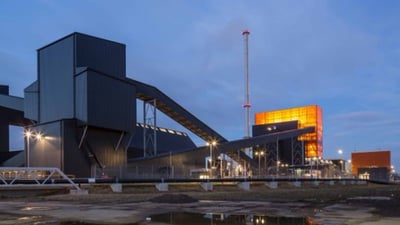
Techniques of natural ventilation that work well in conventional power plants are becoming even more important with the growth in waste-to-energy plants. All power station operators are keen to minimise the ‘parasitic loads’ - the proportion of the energy that they generate that is used to keep the plant running and the relatively small numbers of staff that work there comfortable.
With energy from waste plants, this has become an even more pressing concern for both designers and operators, because of the lower energy density in the source material. Operators are keen not to ‘waste’ any of their energy on parasitic loads. This is a growing market. In 2017, there were 40 energy-from-waste facilities in the UK, up from 26 in 2014. With emphasis on renewable energy continuing to grow, and growing penalties for landfill, we can expect the trend to continue if not accelerate.
Natural ventilation using the stack effect is an ideal solution for many of these plants because it minimises the parasitic loads. The fact that the plants typically have a large volume and are tall, means that the waste heat from generation can drive a thermal stack effect effectively – pushing up warm air to vent at the top while drawing in cooler air at ground level. Ground level is, of course, predominantly where people work and where comfort is paramount. Designs do, however, need to be bespoke. With a wide range of ventilation products and a diverse track record in building types and locations, Colt can use its expertise to provide elegant, efficient solutions, whatever the design and the location. It is important that designers consider the ventilation requirements at an early design stage, since the best natural ventilation solutions will be an integral part of the design. Retrofitting is always complex and may involve compromises. Find out more.
